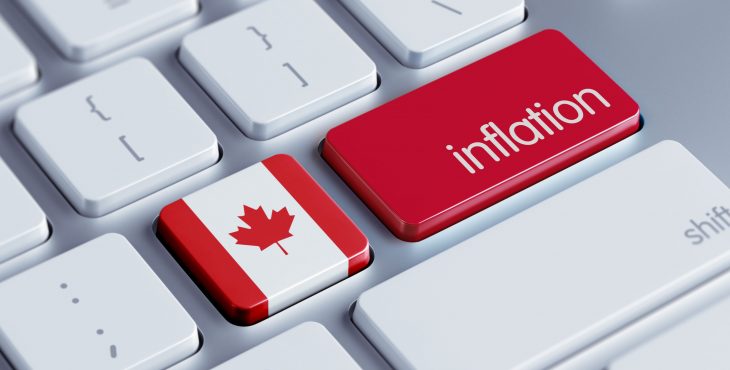Canada’s headline inflation reading ticked up in April, ending a five-month deceleration streak.
The consumer price index came in at 4.4% in April, a tick up from the 4.3% growth recorded in March, according to Statistics Canada’s latest data.
The acceleration was driven in part by increases in rents (+6.1% year-over-year), gasoline (+6%) and mortgage interest costs (+28.5%). It marked the first month-over-month increase in inflation since June 2022.
Rising shelter costs (+4.9%) was the biggest contributor to headline CPI in the month, accounting for a third of overall growth.
Mortgage interest cost, a sub-component of the overall inflation measurements, continued to rise at an annual pace of 28.5% in April, “as more mortgages were initiated or renewed at higher interest rates.,” StatCan said.
That’s up from +26.4% growth in March and +23.9% in February. Housing costs continued to edge down, with the homeowners’ replacement cost index slowing for the 12th consecutive month at +0.2% in April, down from +1.7% in March.
Door remains open to further rate hikes
Economists note that a stall in the pace of inflation trending back to the Bank of Canada’s 2% target—together with a strong jobs market—could leave the door open to further rate hikes.
“April’s inflation data leave the door open for further Bank of Canada rate hikes,” wrote Marc Desormeaux, Principal Economist at Desjardins.
“Price re-acceleration combined with continued strength in the labour market suggest that the economy remains out of balance,” he added. “We still think softening economic activity will eventually help bring inflation to heel, but today’s data suggest that the process could take longer than previously anticipated.”
Bank of Canada Governor said as much during a speech earlier this month in which he reiterated that the Bank’s job wouldn’t be done until inflation returns to 2%.
“If we start to see signs that inflation is likely to get stuck materially above our 2% target, we are prepared to raise rates further,” he said.
BMO’s senior economist Robert Kavcic added that despite core inflation trending in the right direction, there are signs that it’s “settling in” at around 4%, which is “clearly too high” for the Bank of Canada.
“With policy rates on hold at 4.5%, that leaves us with slightly positive real overnight interest rates. But the ‘core’ question is…is that tight enough?,” he wrote. “Maybe, but we (and the BoC) will be watching how some of the more interest-sensitive sectors of the economy, and the job market, evolve in coming months.”
Others agree more time is needed to monitor the unfolding trends as the full effects of the Bank of Canada’s rate hikes are felt fully across the economy.
Despite accelerating in April, inflation has still been “on balance” since reaching a peak of 8.1% last June, noted economists Claire Fan and Abbey Xu from RBC.
“Early signs that the lagged impact of higher interest rates are weighing on economic growth suggest underlying price pressures should continue to ease,” they wrote. “The BoC is expected to stay on the sideline for the remainder of the year.”


